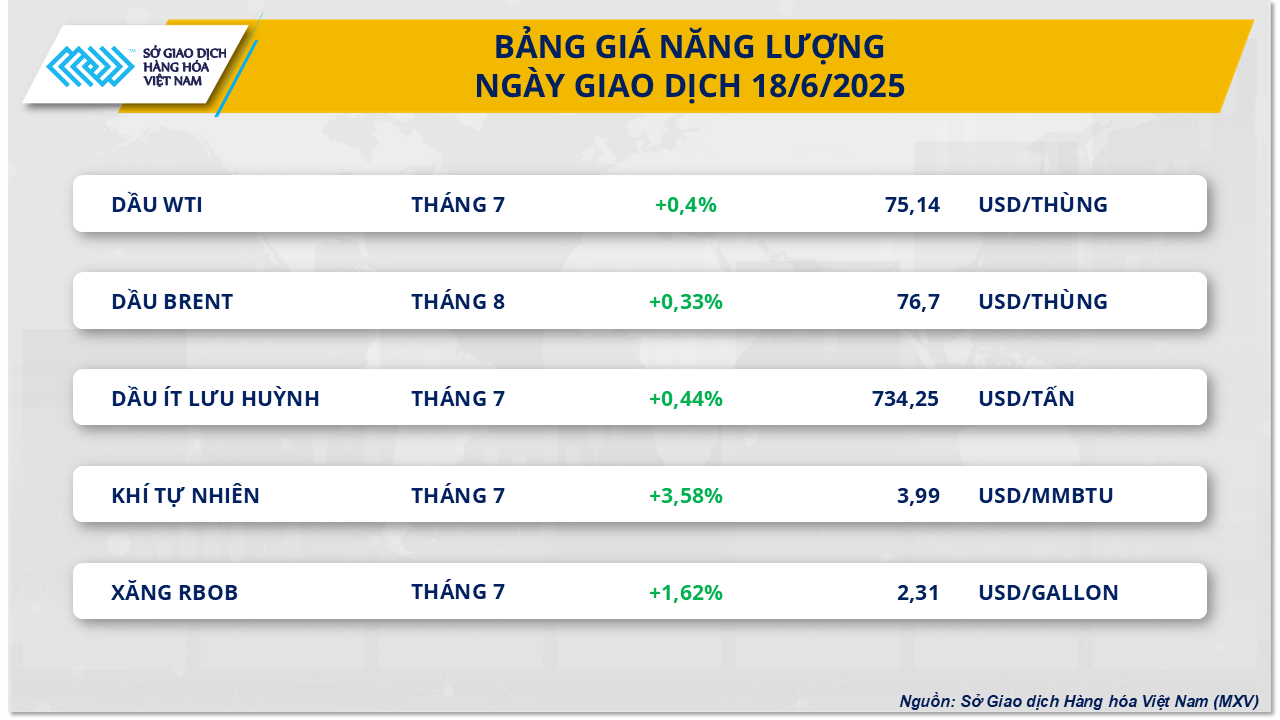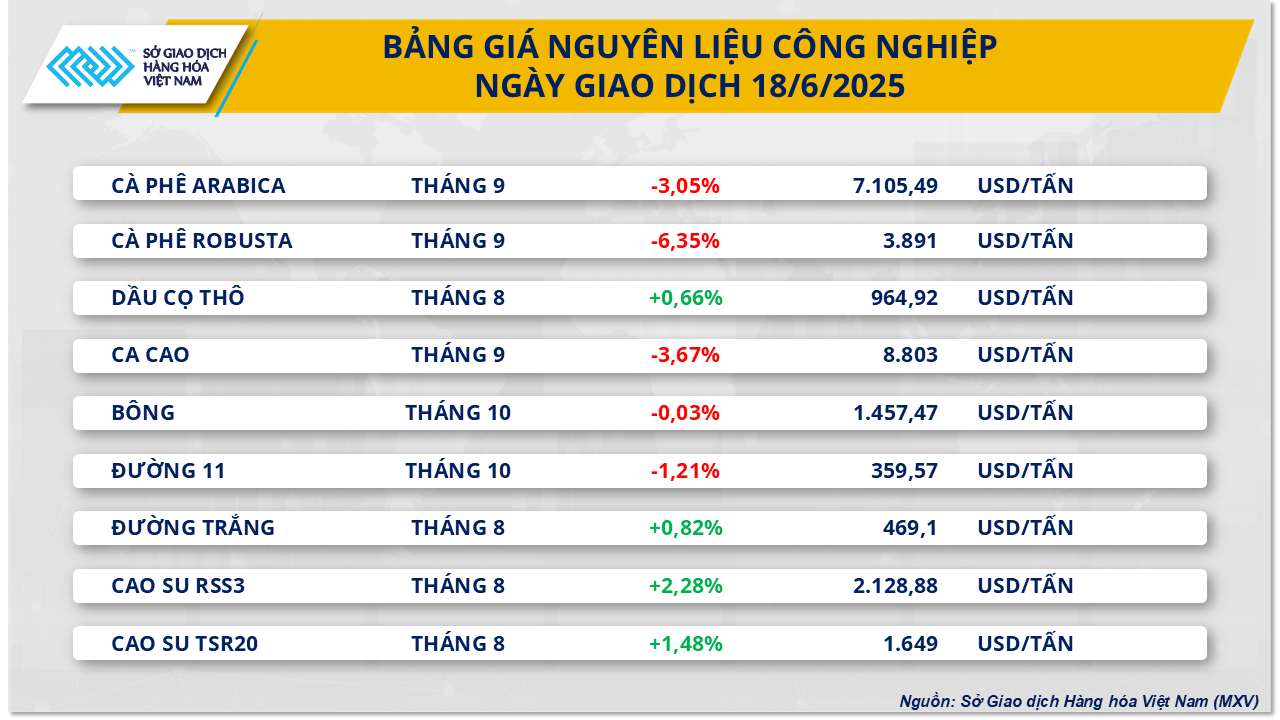In the energy market, according to MXV, yesterday's session was dominated by buying power. WTI crude oil closed up 0.4% to $75.14/barrel - the highest level since January. Meanwhile, Brent crude oil also recorded a slight increase of 0.33% to $76.7/barrel.
Tensions between Israel and Iran continue and appear to be escalating on both sides, especially after tough statements from US President Donald Trump and Iran’s Supreme Leader Ayatollah Ali Khamenei. While there are no signs of a cooling-off, there have been no new reports of major disruptions to Iran’s oil exports or shipping through the Strait of Hormuz, a vital route for the global oil and gas industry. The threat of a blockade of the Strait of Hormuz is a major driver of higher energy prices.
According to analysis by ING bank, nearly a third of the world's commercial oil transported by sea passes through this strait. A significant disruption to these oil flows would be enough to push prices to $120 a barrel. The market is still in a wait-and-see mode as this new conflict in the Middle East continues to have many complicated developments.

In addition, in yesterday's meeting, the Federal Open Market Committee (FOMC) of the US Federal Reserve (FED) decided to keep the basic interest rate at a high level of 4.25 - 4.5%, which has been maintained continuously since the end of 2024. This decision was made in the context of the US economy having just experienced deflation in the first quarter, along with signs that inflation is gradually being controlled, but both the FOMC and the FED assessed that the current inflation rate is still higher than the set target of 2%.
At the same time, the FED also believes that the US economy is still unstable with the possibility of rising inflation, mainly due to the White House's tariff policies as well as the impact of rising energy prices due to geopolitical tensions. High interest rates will drain money from the market and restrain the increase in prices of goods, including energy goods.
Also yesterday, the US Energy Information Administration (EIA) released data and a weekly report on domestic petroleum. Accordingly, similar to the previous estimate of the American Petroleum Institute (API), the week ending June 13 recorded a decrease of up to 11.5 million barrels, marking the fourth consecutive week of decline in US commercial crude oil reserves; thereby, supporting the upward momentum of oil prices. However, petroleum inventories also increased for the third consecutive week, raising some concerns about the situation of energy consumption demand, especially during the peak travel season of American people.
For the industrial raw material group, contrary to the general trend, selling pressure continued to dominate the industrial raw material market, especially with two coffee products. At the end of the session, the price of Arabica coffee fell more than 3% to 7,105 USD/ton, the lowest level in the past 5 months, while the price of Robusta coffee plunged 6.35% to 3,891 USD/ton, the lowest level in the past year.

Abundant supplies in Brazil are putting pressure on coffee prices as the country's harvest enters its peak period, according to MXV.
According to a report from the University of Sao Paulo (Cepea), the progress of the coffee harvest in Brazil's key producing regions is putting downward pressure on international coffee prices. For Robusta, the harvest has reached nearly 50%, equivalent to the average of the past 5 years, and this year's crop is expected to exceed 20 million bags. Meanwhile, Arabica coffee has only just begun to appear on the market because most of it is still in the processing stage. In contrast, Robusta has a shorter processing time and a faster harvest, so Brazilian farmers are pushing to sell to cover costs and clear stocks.
In addition, in recent months, the three major Robusta coffee exporting countries, Vietnam, Brazil and Indonesia, have all recorded strong growth in exports, contributing to improving global coffee supplies. In Vietnam, the world's No. 1 Robusta exporting country, data from the Customs Department shows that coffee exports in May - mostly Robusta - increased by 61% compared to the same period last year, reaching 148,700 tons. In the first 8 months of the 2024-2025 crop year, Vietnam's coffee exports reached about 1.12 million tons. According to MXV, the remaining amount of coffee is expected to be about 430,000 tons, enough to maintain a stable supply and increase compared to the same period last year until the new harvest in October.
Source: https://baodaknong.vn/thi-truong-hang-hoa-19-6-sac-xanh-tiep-tuc-duy-tri-tren-bang-gia-256043.html







































































































Comment (0)